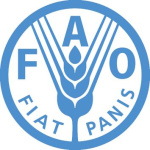- Industry: Agriculture
- Number of terms: 87409
- Number of blossaries: 0
- Company Profile:
Established in October 1945 with the objective of eliminating hunger and improving nutrition and standards of living by increasing agricultural productivity, FAO coordinates the efforts of governments and technical agencies in programs for developing agriculture, forestry, fisheries, and land and ...
In AnGR: The collection of the data on phenotypic traits, marker allele frequencies or DNA sequences for two or more populations, and estimation of the genetic distances between each pair of populations. From these distances, the best representation of the relationships among all the populations may be obtained.
Industry:Biotechnology
In AnGR: The complex of traits related to reproduction and survival of the individual in a particular production environment. Adaptation traits contribute to individual fitness; they are the traits subjected to selection during the evolution of animal genetic resources. By definition, these traits are also important to the ability of the animal genetic resource to be sustained in the production environment. (Based on FAO, 1999)
Industry:Biotechnology
In AnGR: The manipulation of inputs to, and outputs from, livestock production systems aimed at increasing production and/or productivity and/or changing product quality, while maintaining the long-term integrity of the systems and their surrounding environment, so as to meet the needs of both present and future human generations.
Sustainable agricultural intensification respects the needs and aspirations of local and indigenous people, takes into account the roles and values of their locally adapted genetic resources, and considers the need to achieve long-term environmental sustainability within and beyond the agro-ecosystem.
Industry:Biotechnology
In AnGR: The sum total of technical, policy and logistical operations involved in understanding (characterization), using and developing (utilization), maintaining (conservation), accessing, and sharing the benefits of animal genetic resources.
Industry:Biotechnology
In AnGR: The use and development of animal genetic resources for the production of food and agriculture.
The use in production systems of AnGRs that already possess high levels of adaptive fitness to the environments concerned, and the deployment of sound genetic principles, will facilitate sustainable development of the AnGRs and the sustainable intensification of the production systems themselves. The wise use of AnGRs is possible without depleting domestic animal diversity. Development of AnGRs includes a broad mix of ongoing activities that must be well planned and executed for success, and compounded over time, hence with high value. It requires careful definition of breeding objectives, and the planning, establishment and maintenance of effective and efficient animal recording and breeding strategies.
Industry:Biotechnology
In vitro formation of tissues with few differentiated cell types and no recognizable structure; many call are unorganized.
Industry:Biotechnology
Introduced by Kao and Konstabel (1970), this technique is used to evaluate large numbers of media modifications, employing small quantities of medium into which are placed small numbers of cells. Droplets of liquid are arranged on the lid of a Petri dish, inverted over the bottom half of the dish containing a solution with a lower osmotic pressure, and the dish is sealed. The cells or protoplasts form a monolayer at the droplet meniscus and can easily be examined.
Industry:Biotechnology
One of a battery of antigenic determinants expressed by a micro-organism to elude immune detection.
Industry:Biotechnology
Potential brought about by dissolving a substance, especially in water.
Industry:Biotechnology
